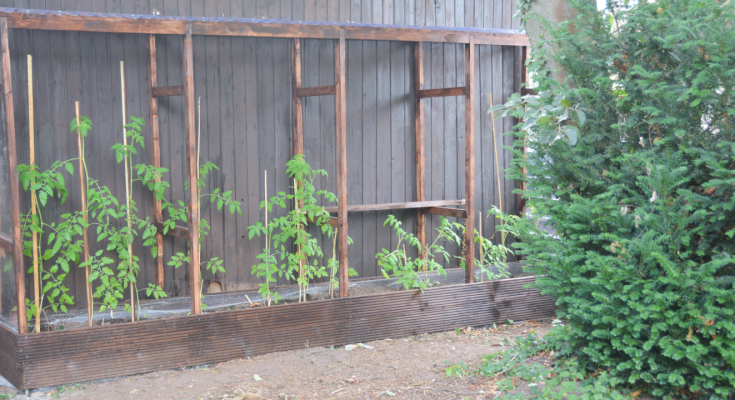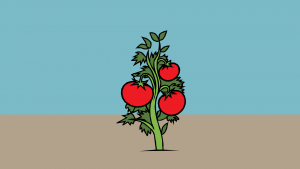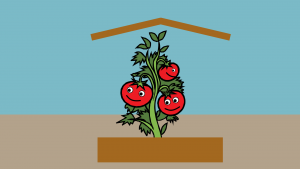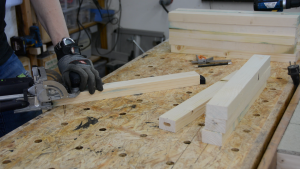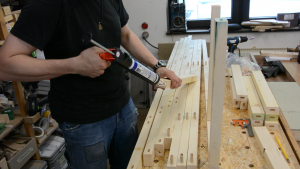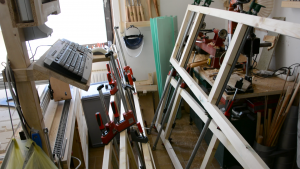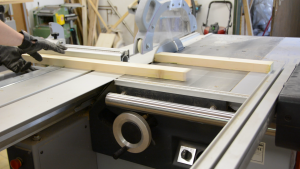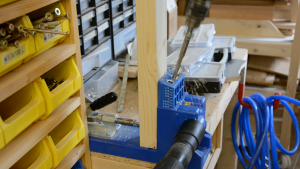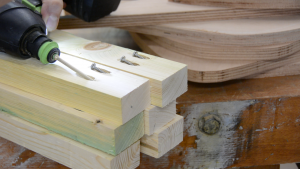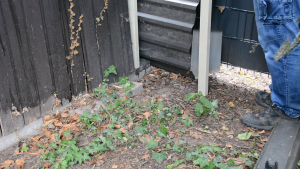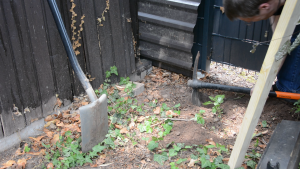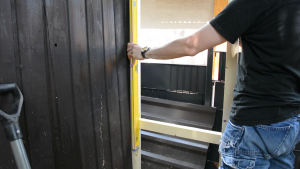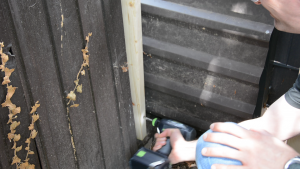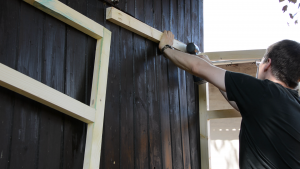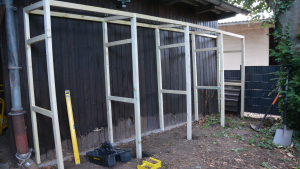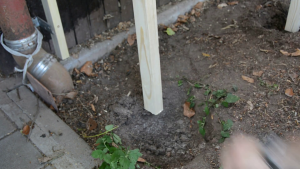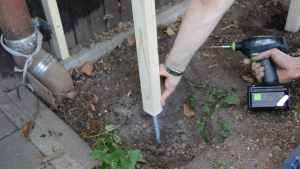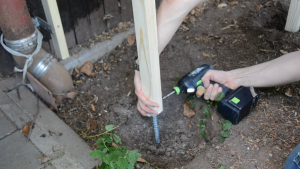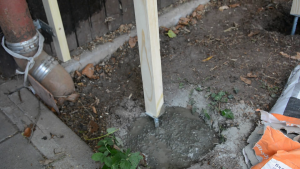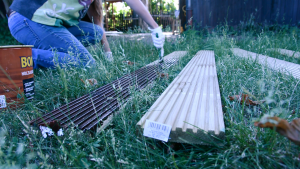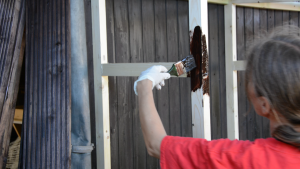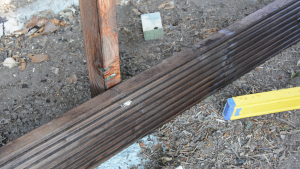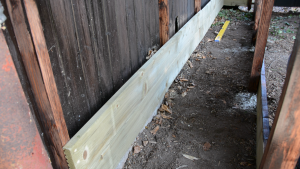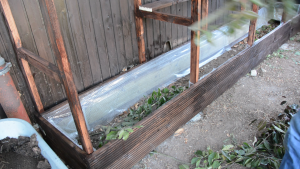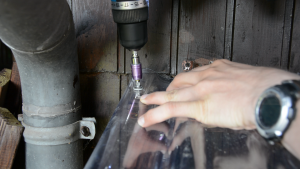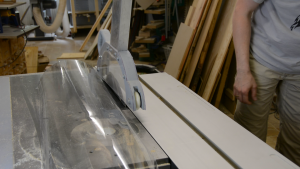In this article we create a lean on greenhouse to grow tomatoes. It is a really simple design, and has an integrated raised bed.
Tomatoes need good soil and water to grow and stay healthy.
Water from the top will however stick to the leaves, and increases the likelihood of plant diseases.
To accommodate these needs we will build a combination of a green house and a raised bed.
Creating the structure
We use pressure treated pine for this build. The pressure treatment leaves green salt on the surface that I remove on the planer. I don’t bother jointing the boards as a little bit of a bow doesn’t matter for this application.
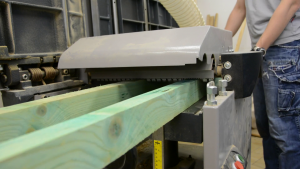
In the workshop I am assembling 5 frames using floating tenons.
If you don’t have a domino jointer have a look at this article where I am building a jig that serves the same purpose. The frames are assembled with construction adhesive and clamped together.
To connect the frames I cut additional pieces and create pocket holes at the ends.
To make assembling easier I put screws in the holes so that they stick out a tiny bit.
Installing the lean on greenhouse
Preassembling makes the actual construction relatively easy. Holding the frame level and plum I find the right place to dig a hole for the foundation.
We make sure the first piece is level and screw It to the studs in the shed.
Using the pocket holes we screw the spacer pieces to the frames and attached them to the shed as well.
The next frame is then put in place, screwed to the shed. I continue this way till all pieces are in place.
The next step is to cut the lower end of the front to the appropriate length, attach a metal shoe and anchor the shoe in a concrete foundation.
The concrete I’m using here is put in place dry, then water is added and the foundation cures within an hour.
My wife has been painting the planks for raises beds the day before and is now also painting the entire structure.
To create the raised beds we attach the boards to the frame structure.
Getting the first row level is a bit of challenge.
The next set of boards goes on quickly. As we are separating the soil from the wood by a plastic bubble wrap foil I don’t care about the wood being pressured treated.
If your soil gets in direct contact to the wood you should use non-pressure treated material. After the foil is stapled in place we put in some bush cutting, then compost and soil.
Lastly I put a transparent plastic roof on top and secure it with self-sealing screws.
As I explained in the beginning the lean on greenhouse is just there to keep the plants dry.
We can therefore get away with screwing a thicker plastic sheet to the sides and leaving the front open. If you life in a climate where the isolation of the lean on greenhouse matters you should use twin-wall sheets instead and build a set of simple doors. I might add doors to ours next year.
I am looking forward to harvesting our own tomatoes again.

